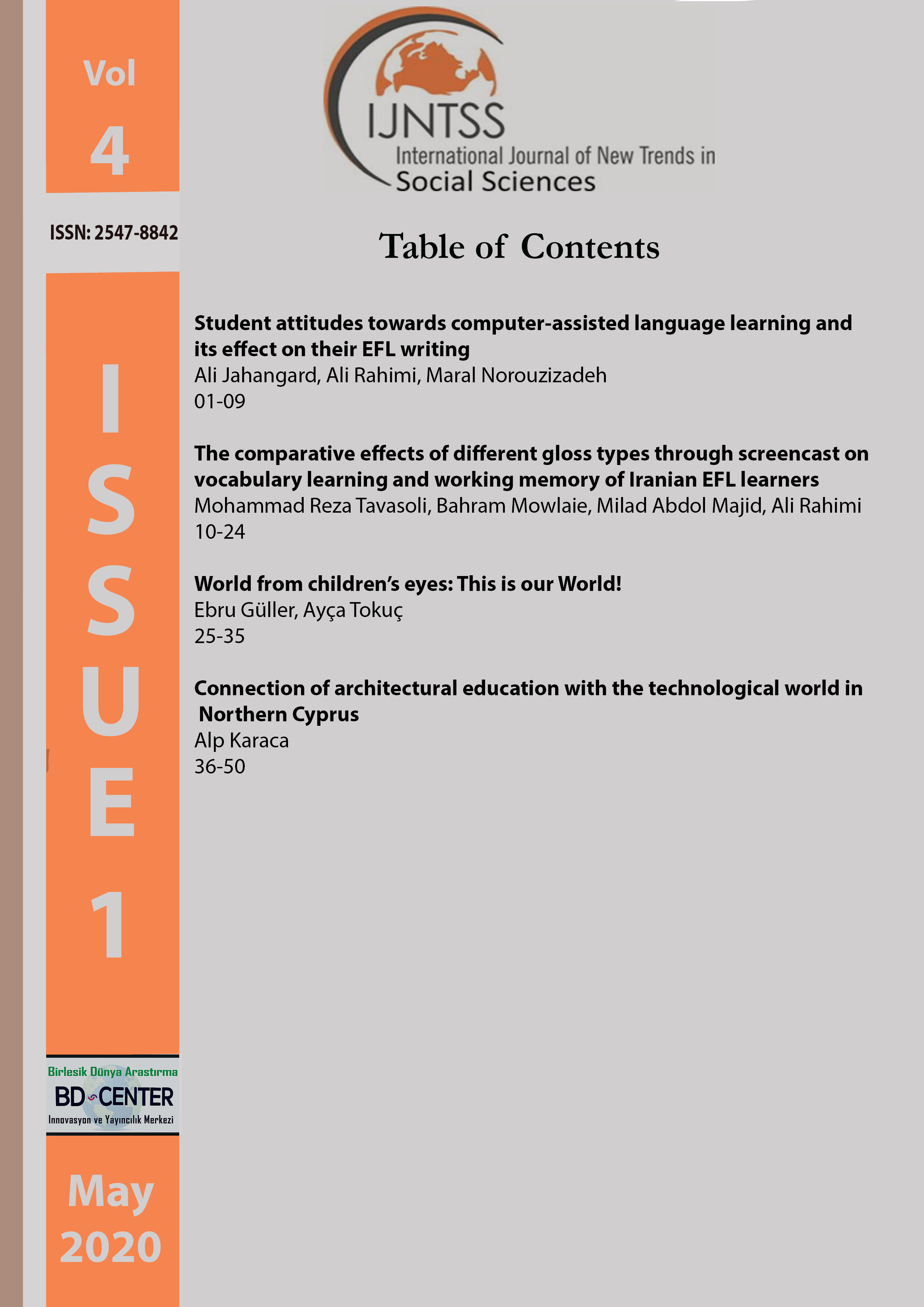World from children’s eyes: This is our World!
Main Article Content
Abstract
Knowledge and awareness of environmental and ecological issues, and the propensity to think and care about these issues from a wide perspective, i.e., environmental consciousness, are necessary, and can be improved by environmental education. This study aims to evaluate and improve environmental consciousness of children. This work shows the preliminary results of a workshop entitled ‘This is our world’. In this context, in the first stage, how the children see the world that they are living in is researched by examining their answers to the question ‘What kind of a place is the world?’ In the second stage, the children answered the question ‘What kind of a world do we want?’ and presented their ideas about the world they dream to live in. In the third stage, the children designed on balloons, which represented the world. Their answers and designs were collected via a semi-structured interview form and two- and three-dimensional visual materials, i.e., pictures and models. The data were evaluated through keywords related to their conceptual development and environmental consciousness. Content analysis and semiotic analysis were applied to the data. In addition, the written data, the visual data and the analysis results were triangulated to test for consistency between the data and analysis results. In conclusion, how to build a healthy world was examined by deciphering the children’s dream world.
Keywords: Environmental education, environmental perception, environmental consciousness, children
Downloads
Article Details

This work is licensed under a Creative Commons Attribution 4.0 International License.
Authors who publish with this journal agree to the following terms:
- Authors retain copyright and grant the journal right of first publication with the work simultaneously licensed under a Creative Commons Attribution License that allows others to share the work with an acknowledgement of the work's authorship and initial publication in this journal.
- Authors are able to enter into separate, additional contractual arrangements for the non-exclusive distribution of the journal's published version of the work (e.g., post it to an institutional repository or publish it in a book), with an acknowledgement of its initial publication in this journal.
- Authors are permitted and encouraged to post their work online (e.g., in institutional repositories or on their website) prior to and during the submission process, as it can lead to productive exchanges, as well as earlier and greater citation of published work (See The Effect of Open Access).
